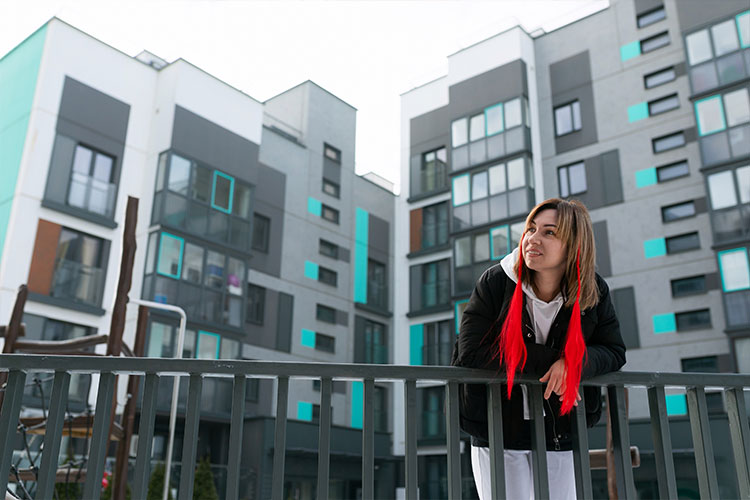Access Control Systems for Student Accommodation
Access control is the first line of defence when it comes to controlling who enters the building. We work with systems that range from traditional keys to modern electronic setups.
Keyless Entry Systems
Modern keyless entry options, like RFID and smart locks, are making a strong case for themselves. They offer benefits such as:
- Ease of Use: No more lost keys. You tap or swipe a card.
- Audit Trails: You can see who entered and when with electronic systems.
- Remote Management: Some systems allow you to control access remotely, which is excellent for managing multiple access points.
Traditional Key Systems vs Electronic Access Control
There is no one-size-fits-all answer. Each system has its perks:
- Traditional Keys:
- Cost-Effective: They are inexpensive and familiar to most users.
- Simple: Easy to understand with no need for technical support.
- Electronic Access Control:
- Better Tracking: Digital records help identify any unusual activity.
- More straightforward to Update: Changing access rights can be done in minutes without rekeying.
It’s wise to invest in electronic access for common areas like corridors, lounges, and study spaces. This way, you will know who is using these shared spaces and when.
Surveillance Systems: CCTV and Legal Boundaries
Installing cameras isn’t just about watching—it’s about keeping a record to help resolve disputes or catch wrongdoers. CCTV is a standard tool in student accommodation, but there are best practices to keep in mind.
CCTV in Student Accommodation: Best Practices
When placing CCTV, We always consider these factors:
- Location: Cameras should cover main entrances, exits, and shared spaces. Avoid private spots like individual rooms.
- Clarity: Ensure the footage is clear enough to identify faces without being overly intrusive.
- Maintenance: Regular checks are essential. A camera that isn’t working is no protection at all.
Installing Security Cameras in Student Rooms vs Common Areas
- Student Rooms:
- Privacy First: Installing cameras here can breach privacy laws. Only consider them if there’s a strong reason and with full consent.
- Common Areas:
- Broader Coverage: Cameras in corridors and communal spaces work well to monitor overall activity.
- Legal Recording: Always post clear signs that recording is in progress. This helps keep everyone informed and within the law.
Monitoring and Recording: Legal Considerations
It’s not just about setting up cameras. You have to think about:
- Data Storage: How long is the footage kept? Make sure it follows data protection rules.
- Access Rights: Only authorised personnel should be allowed to review the footage.
- Consent: Inform residents clearly about where and when the recording happens.
Lighting and Visibility: Keeping Areas Well-Lit
Good lighting is one of the simplest yet most effective ways to increase security. We always stress the importance of having clear, bright entrances and walkways.
Well-lit entrances and Walkways
Poorly lit areas give any wrongdoer the chance to hide.
Here are some pointers:
- Regular Maintenance: Ensure lights work correctly all year round.
- Bulb Quality: Use bulbs that give off a steady, clear light without harsh shadows.
- Coverage: Make sure no spot is left in the dark, especially near entry points.
Motion-Sensitive Lighting
For spots that aren’t always in use, motion-sensitive lights can be a smart move:
- Cost-Effective: They only light up when needed.
- Deterrent: Sudden lighting can startle someone with bad intentions.
- Easy Installation: Many modern options fit seamlessly into existing setups.
Fencing and Perimeter Security: Barriers That Work
The proper fencing and barriers outside the building help mark boundaries and keep unwanted visitors at bay. We recommend a mix of solid physical barriers and controlled access points in my work.
Types of Fencing
There are a few standard options, each with its strengths:
- Wrought Iron: Offers a classic look with strong resistance to tampering.
- Steel: Provides robust protection and is hard to cut through.
- Wooden: Can work well in quieter settings, though it needs regular upkeep.
Gates and Barriers for Controlled Access
It’s not enough to have a fence. You also need controlled points:
- Secure Gates: Ensure entry points have locks that work well with your access control system.
- Barriers: Use barriers to slow down anyone trying to force entry. They buy you time to react.
- External Perimeter Solutions: Consider additional measures like bollards or anti-ram devices near parking lots and driveways.
Wrapping Up
We’ve outlined some key areas we need to consider for physical security in student halls. Every bit counts, from Access Control Systems with keyless entry options to practical Surveillance Systems that respect privacy, clear Lighting and Visibility, and sturdy Fencing and Perimeter Security. Each measure plays a role in creating a safer environment where residents feel secure. Remember, when it comes to Physical Security Measures Student Accommodation Security, the goal is simple—keep things safe and straightforward from the first door to the last light.

